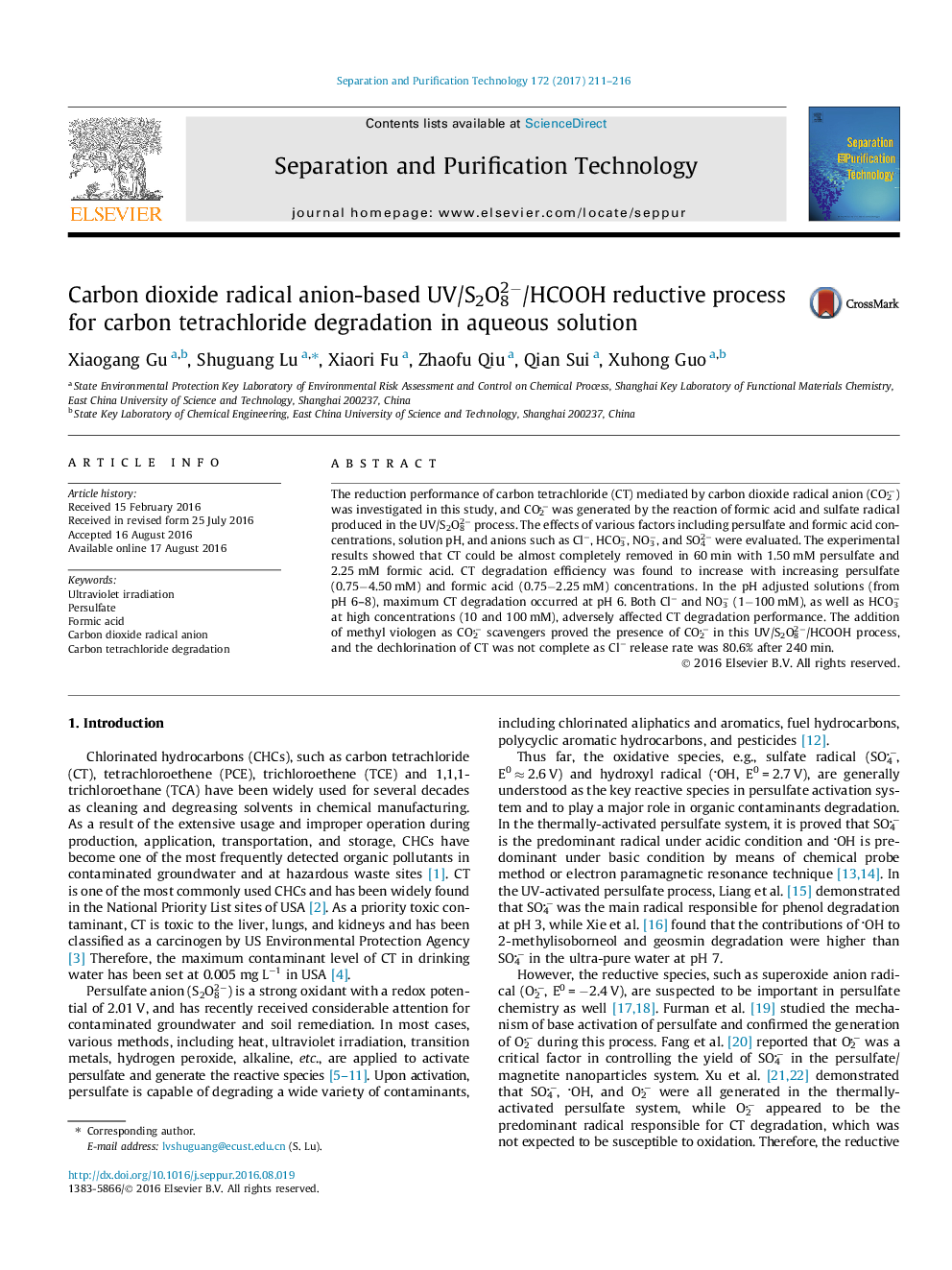| کد مقاله | کد نشریه | سال انتشار | مقاله انگلیسی | نسخه تمام متن |
|---|---|---|---|---|
| 639759 | 1456948 | 2017 | 6 صفحه PDF | دانلود رایگان |
• CT could be effectively removed in the UV/S2O82−/HCOOH process.
• CO2− was generated in the UV/S2O82− process with the addition of formic acid.
• CT degradation performance was influenced by solution matrix.
• The dechlorination of CT was 80.6% while no volatile intermediates were detected.
The reduction performance of carbon tetrachloride (CT) mediated by carbon dioxide radical anion (CO2−) was investigated in this study, and CO2− was generated by the reaction of formic acid and sulfate radical produced in the UV/S2O82− process. The effects of various factors including persulfate and formic acid concentrations, solution pH, and anions such as Cl−, HCO3−, NO3−, and SO42− were evaluated. The experimental results showed that CT could be almost completely removed in 60 min with 1.50 mM persulfate and 2.25 mM formic acid. CT degradation efficiency was found to increase with increasing persulfate (0.75−4.50 mM) and formic acid (0.75−2.25 mM) concentrations. In the pH adjusted solutions (from pH 6–8), maximum CT degradation occurred at pH 6. Both Cl− and NO3− (1−100 mM), as well as HCO3− at high concentrations (10 and 100 mM), adversely affected CT degradation performance. The addition of methyl viologen as CO2− scavengers proved the presence of CO2− in this UV/S2O82−/HCOOH process, and the dechlorination of CT was not complete as Cl− release rate was 80.6% after 240 min.
Figure optionsDownload as PowerPoint slide
Journal: Separation and Purification Technology - Volume 172, 1 January 2017, Pages 211–216
